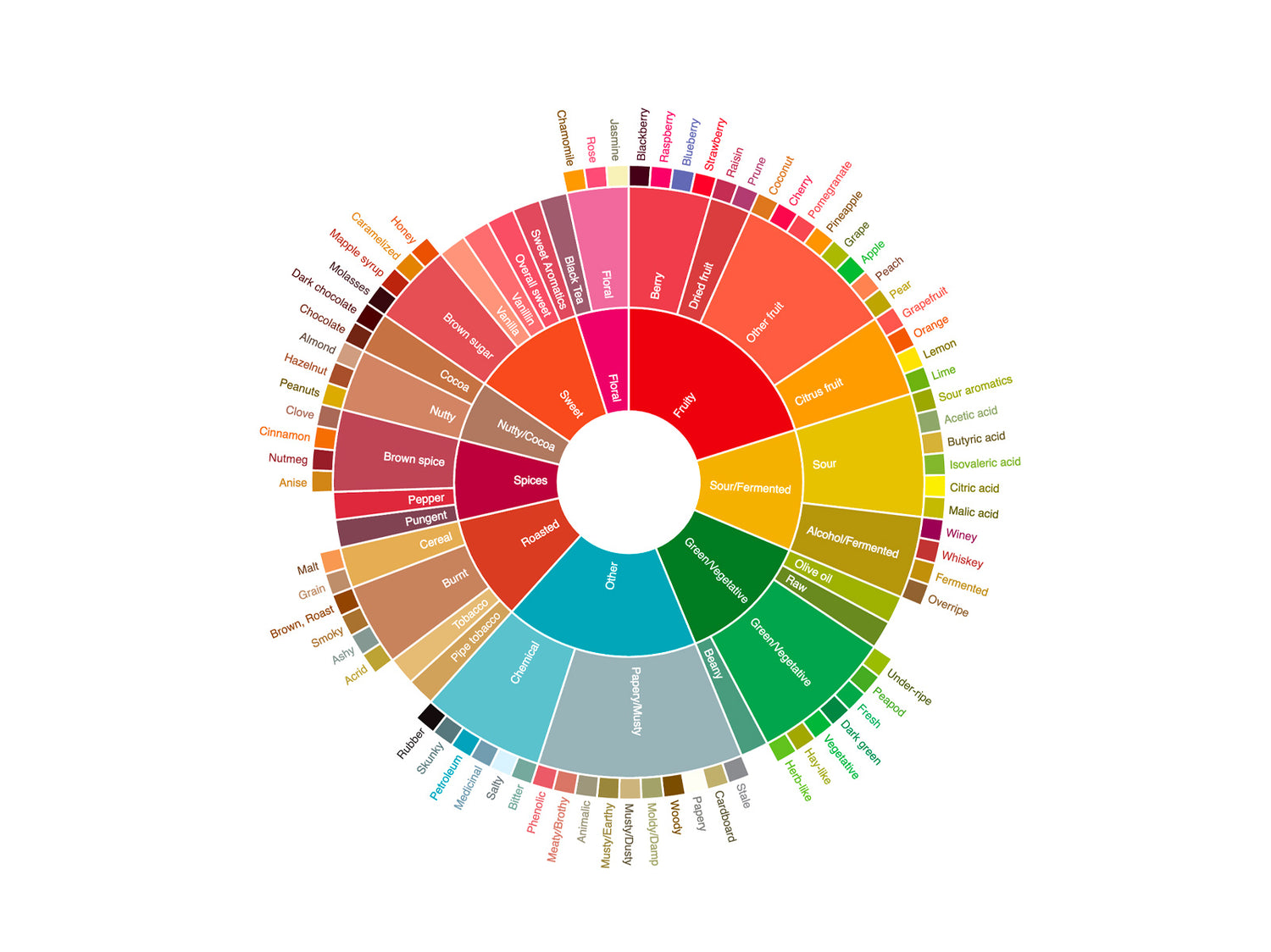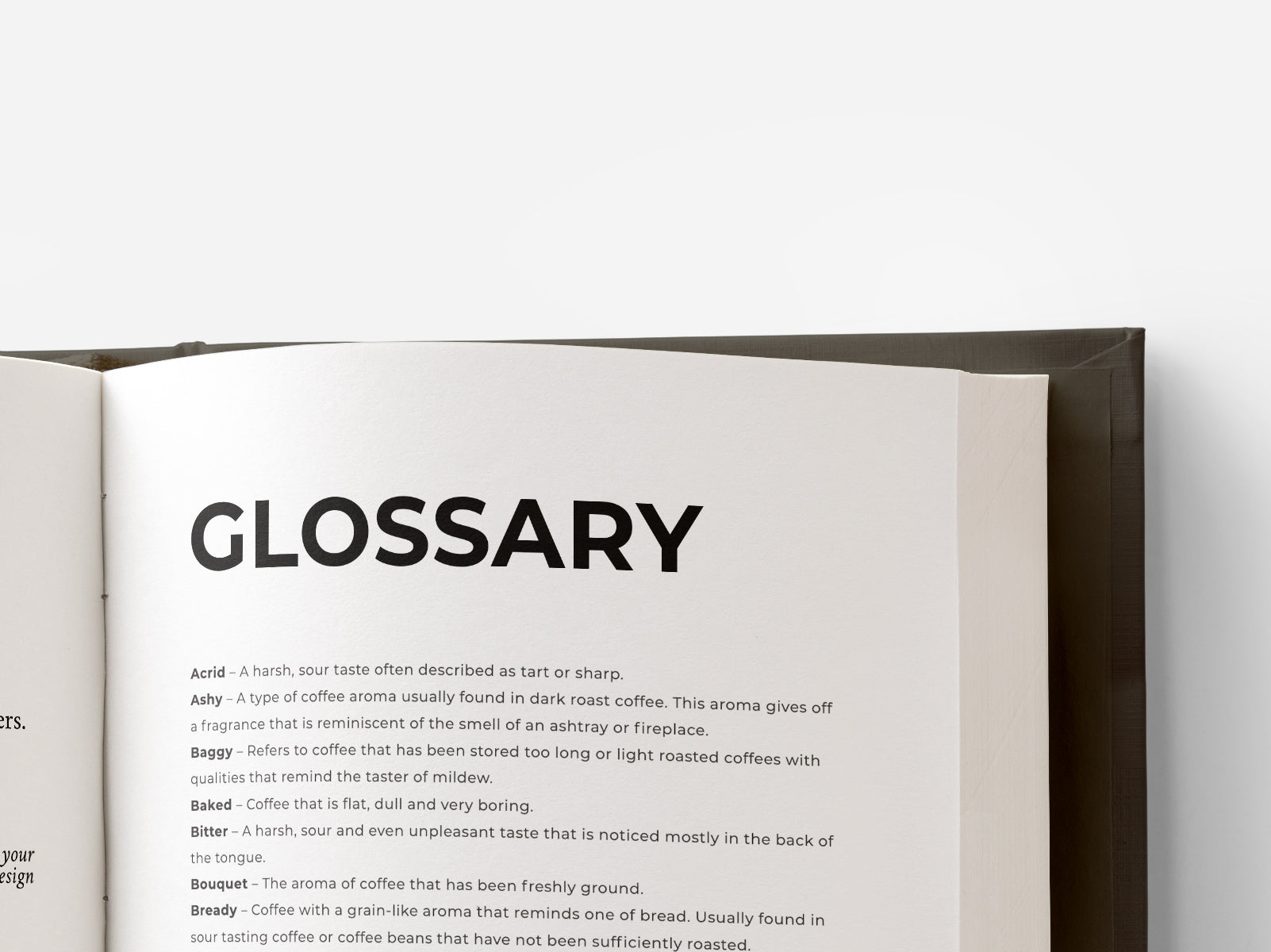‘Flavor’ is defined as a combination of taste and smell, and the flavor wheel contains attributes on the entire continuum between basic tastes (those things perceived only by the tongue) to pure aromatics (those things that only can be smelled).
It’s important to know that tasting very much relates to your memory. If you had try it, you can relate to it, then you can recall it.
The Specialty Coffee Association of America (SCA) have developed a coffee taste wheel that has help you describe how each cup of coffee tastes. This can be a great reference while you practice on your own.
The wheel’s design encourages the taster to start at the center, and work outward. The most general taste descriptors are near the center, and they get more specific as the tiers work outward. The taster can stop anywhere along the way, but the farther outward the taster works, the more specific the description might be. As an example, the coffee taster might detect a fruitiness when tasting a coffee from Ethiopia. Moving through the ‘fruity’ section of the wheel, they are confronted with a choice: is the fruitiness reminiscent of berries, dried fruit, citrus fruit, or something else? If the taster decides ‘citrus fruit’, they then can sharpen the descriptor: is it ‘grapefruit’, ‘orange’, ‘lemon’ or ‘lime’? Having identified that flavor, the taster can move back to the center and start again, zeroing in on another flavor, and another, until they feel their description of the coffee is complete. This is the basic function of the wheel, and can be used very simply at that level. However, there is more to the wheel, and the expert taster can move further.
It was overwhelming for me at first, but I have summarised some important and generic points. It starts with 9 generic category flavors from sweet, floral, fruity, fermented, vegetative, roasted, spices, nutty, others.
Most coffee varieties are acidic, with an average pH value of 4.85 to 5.10. To give you a perspective, food and beverages like prunes, popcorn, cheese, and black tea ranges around this pH value.
This is how I simplify it: Lighter flavors vs Heavier flavors:
Lighter Flavors
These flavors cover sweet, floral, and fruity. Before we go a little deeper, picture one thing that you have consumed, that taste sweet, floral, or fruity. Here’s my example:
- fruit juice (sweet)
- chamomile tea (floral)
- pineapple (fruity)
- jackfruit (fermented)
- herbs (vegetative)
In the generic flavour of sweet, brown sugar is one of the common one, and it breaks down to more specific flavors like maple syrup, honey, or caramel. So if you are thinking fruit juice, think less sweet, think subtle.
Next is floral, the common flavors are chamomile, rose, and jasmine. And you would notice that you fine a lot of those flavors in your tea. And yes, your coffee can taste a little like tea. It would typically appear after you swallow your coffee, that lingering after taste.
And then there’s the fruity flavor which is one of the bigger segment on the coffee wheel. It covers areas berry, dried fruits, citrus fruits, and others like pineapple, coconut, peach, pear. You would likely taste this the fruity flavour almost immediately when you drink your coffee. And if you like your fruits, you would immediately enjoy that pleasant flavor.
Next to fruity would be fermented flavour, so picture the apple you make apple crumble with, it would like taste a little winey, a little whiskey, a little like kombuchas.
On an even lighter note would be flavors like hay-like, herb-like, vegetative, under-ripe.
Heavier Flavors
These flavors cover roasted, spices, nutty, cocoa, chemical, and musty. Flavors like this are usually related to the body of the coffee, and usually be flavor that is the defines the beverage as coffee. Like we did above, picture one thing that you have consumed, that taste roasted, spices and nutty.
Here’s my example:
- roasted macademia (roasted)
- cinnamon (spices)
- hazelnut (nutty)
- woody (musty)
In the flavors of roast, picture burnt like smoky, ashy, tobacco, and even grainy like malt and cereal. Spices like pepper, cinnamon, nutmeg, anise, clove! These are definitely an acquired taste for most. The familiar taste of nutty/cocoa would bring you flavors like almond, peanuts, hazelnut, and chocolate, very obviously strong flavors that most are familiar with. The other bigger flavor segment are musty flavors that like woody, earthy, cardboard, and sometimes papery. Being one of the biggest segment on the wheel, it also represents a huge representation of coffee drinkers in the market, a very familiar flavour that most would associate coffee with.
So, have you decided if you prefer the light flavor note, or a heavy flavor note coffee?



